

Leather and Clothes: NativeTech. How To Make Moccasins. The most comfortable moccasins in the world… This last summer Wilderness Youth Project took a group of teenagers on a trip up the coast experiencing elements of survival such as sleeping in a debris hut, making fire by friction and eating wild edibles.
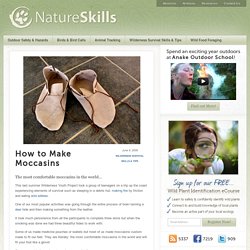
One of our most popular activities was going through the entire process of brain tanning a deer hide and then making something from the leather. It took much persistence from all the participants to complete three skins but when the smoking was done we had three beautiful hides to work with. Some of us made medicine pouches or wallets but most of us made moccasins custom made to fit our feet. They are literally: the most comfortable moccasins in the world and will fit your foot like a glove! Do you want to know how to make moccasins? Below are directions on how to make moccasins for you. Happy Sewing!!! Materials for making moccasins: Artificial sinewGlovers needlesOld paper bagLeather (at least 20”x16”)Pen Connect the two points at the bottom.
DIY Viking Shoes From Scratch. Edited to add: Due to alle the comments regarding the title of this instruction, I've changed the name to 'iron age shoes' which might be more historycally correct.
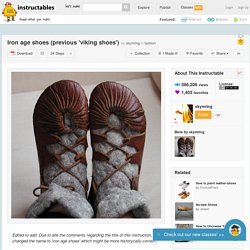
I learned to make these by using my own foot as a template. Therefore, all the measures given here are highly approximate. If your foot diverges a lot from mine (European size 39, long and narrow/slender), some sewing experience might come in handy. That said, there's no reason to be too specific in making these. As you can see, the 'laces' can be loosened or tightened to fit, and the basic idea is really very simple. Deer Hide Tanning. A good portion of your deer's live weight is made up by the hide.
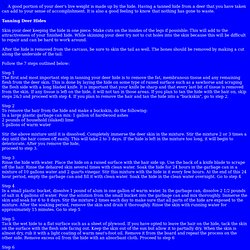
Having a tanned hide from a deer that you have taken can add to your sense of accomplishment. It is also a good feeling to know that nothing has gone to waste. Wet-Scrape & Dry-Scrape Deer Hide Tanning Resources. How To Brain Tan Deer & Elk Skins. From handouts made at Victoria Settlement Provincial Historic Site.
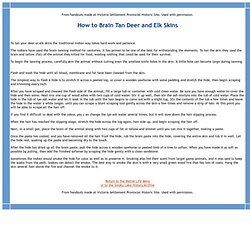
Used with permission. To tan your deer or elk skins the traditional Indian way takes hard work and patience. The Indians have used the brain tanning method for centuries. Free Books: Hide Tanning & Animal Traps. Ultimate Collection of Leather Resources. Leather, a flexible and durable material created from animal rawhide and through a tanning process, comes in a variety forms.
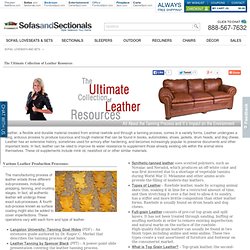
Leather undergoes a long, arduous process to produce luxurious and tough material that can be found in books, automobiles, shoes, jackets, drum heads, and dog chews. Leather has an extensive history, sometimes used for armory after hardening, and becomes increasingly popular to preserve documents and other important texts. In fact, leather can be oiled to improve its water resistance to supplement those already existing oils within the animal skins themselves. These oil supplements include mink oil, neatsfoot oil or other similar materials. Various Leather Production Processes: The manufacturing process of leather entails three different sub-processes, including prepping, tanning, and crusting stages. Langston University: Tanning Goat Hides (PDF) – An extensive guide authored by Dr. A Guide To Leatherworking Tools & Supplies.
Would our Guide to Essential Leatherworking Tools be of any help?

Quick navigation: A B C D E G H K L N O P R S W Awls Clicker's Awl Straight, tapered and round in cross-section, this is a general purpose tool used for marking out or stabbing holes in leather.The Clicker was the skilled worker in shoe manufacturing who cut the leather from patterns. Scratch Awl As above but thicker in the shaft. Harness or Bridle Awl A diamond-shaped blade and handle used to make holes in leather prior to stitching. Stabbing Awl A straight blade of round cross-section with a very fine taper and sharp point.
Burnishers - These smooth, shaped pieces of wood or bone are used to rub down the surfaces of natural leathers to produce a shine and seal the grain. Chisel punches - These come with oval or pointed profiled cutting faces and are used on strap ends to give a rounded or pointed symmetrical end. Cork Block - For use when butt stitching. Creasing tools - Single Crease Double Crease Screw Crease Crew Punches Edge Shave.